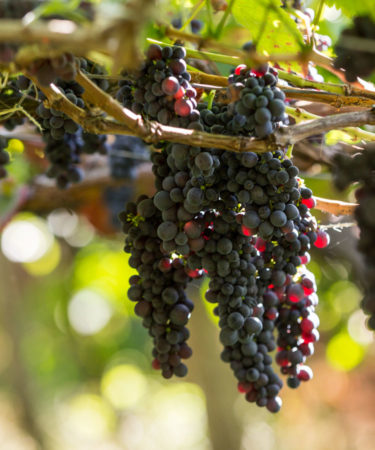During a 1900 New York City wine auction, the absence of a particular Madeira sparked outrage. “Baltimore connoisseurs thought so highly of them, they bought them all up and none reached New York,” an angry, would-be buyer speculated.
He was probably correct. Baltimore connoisseurs did, indeed, have a taste for the fortified wine called Rainwater Madeira. In 1902, Douglas H. Thomas, the city’s preeminent wine collector, described it as the “highest standard” of Madeira. This was especially lofty praise because Madeira was America’s most prestigious wine at the time; glasses were poured to toast both the signing of the Declaration of Independence and George Washington’s Inauguration.
Produced on the Portuguese islands of the same name, all Madeira wines are fortified using grape spirit, and then undergo a unique aging process involving deliberate oxidation and heating. It results in a complex flavor profile, with lots of dried fruit and savory notes.
Rainwater Madeira is usually made with Tinta Negra Mole grapes, and is fresh-tasting and medium dry. Like its Spanish cousin sherry, much of Rainwater Madeira’s modern-day resurgence stems from its use in craft cocktails.
“Rainwater Madeira has an impressive ability to lighten cocktails without making them seem diluted,” cocktail luminaries Alex Day, David Kaplan, and Nick Fauchald (of Death & Co. fame) write in the James Beard Award-winning “Cocktail Codex.”
How rainwater influences its character has historically been up for debate. One version of the origin story refers to the steep hillside vineyards on Portugal’s Madeira islands. Irrigation in this setting is not only impractical, it’s almost impossible, so grape growers have typically relied on rainfall to water their vines.
A second, more romantic tale credits the name to a barrel of Madeira that was left on a beach before being shipped to the American colonies. The barrel’s stopper was left undone, and, overnight, rain diluted the wine inside. Rather than take a loss on the wine, the merchants sold the Madeira as a “new” style, which was lighter and more refreshing.
Either way, Rainwater Madeira was a hit with early 20th-century American wine merchants, just as it is today at some of America’s most celebrated bars.
For their Golden Boy cocktail in “Cocktail Codex,” Alex Day and Devon Tarby use the wine to riff on the Old Fashioned, mixing it with raisin-infused Scotch, Calvados, Benedictine, and Peychaud’s bitters. “In addition to flavor, the Madeira and Benedictine bring a balanced amount of sweetness to the cocktail,” the duo write.
At Employees Only, a speakeasy in NYC’s West Village, Rainwater Madeira is stirred with bourbon and a few dashes of chamomile cordial for another Old Fashioned-adjacent aperitif.
Justin Cara-Donna, a bartender at the capital of Washington D.C.’s cocktail scene, Columbia Room, says one of his favorite uses for Rainwater Madeira is in the classic Madeira punch Sangaree, which shakes the fortified wine with simple syrup and fresh lemon juice and garnishes it with freshly grated nutmeg. (It’s a great Thanksgiving cocktail, too.)
When he’s not mixing the classics, Cara-Donna says using Rainwater Madeira as a split-base in tiki drinks can be really interesting. (Split-base cocktails swap out half of the traditional base spirit and introduce a different liquor for a new and interesting take.) “A Madeira Painkiller with split rum base is a really fun cocktail,” he says.
While it’s quietly trending this side of the Atlantic, don’t expect to find many Rainwater Madeira cocktails in Portugal any time soon.
“I have never seen [it] used in any drinks in Portugal,” Manuel Barreira, owner of Lisbon’s Ulysses Bar, writes VinePair in an email. “Portuguese [people] don’t typically drink cocktails, and the ones they do are very sweet. Madeira is drunk on its own; Rainwater Madeira being [the] least popular.”
